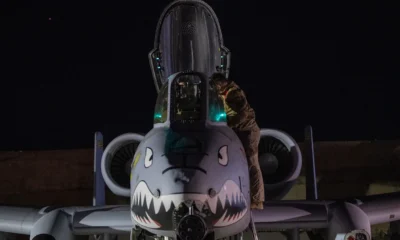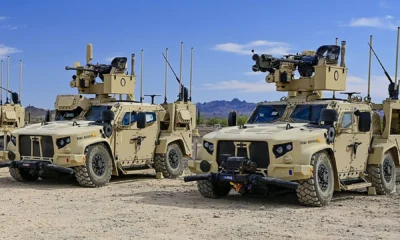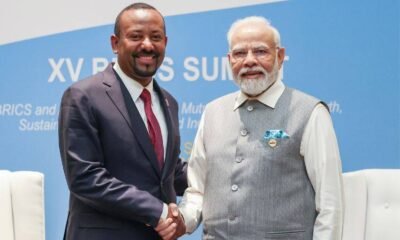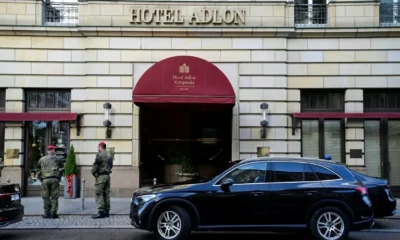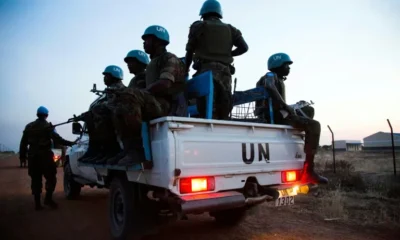Russia-Ukraine War
Speculation Surrounding North Korean Troop Deployments

Ukrainian President Volodymyr Zelenskyy’s recent claims that North Korean troops are preparing to deploy to Russia for possible deployment in Ukraine have added new dimensions to the already complex and protracted conflict. The possible arrival of North Korean soldiers would represent a significant expansion of foreign involvement in Europe’s largest war since World War II, heightening diplomatic tensions and posing potential geopolitical consequences stretching from Europe to the Indo-Pacific region.
An Unprecedented Alliance?
The presence of North Korean forces in Russia could reinforce a burgeoning alliance between Moscow and Pyongyang, building on North Korea’s recent ammunition supplies to Russia. Such an arrangement signals a potential shift in North Korea’s foreign policy, transitioning from indirect support through munitions to direct military involvement in combat zones—a move that could add a new layer of complexity to the international response to the conflict.
According to White House national security spokesman John Kirby, the governments of the United States, Japan, and South Korea are deeply concerned about North Korea’s actions, which they warn could expand the war’s security implications beyond Europe. These developments have intensified high-level diplomatic efforts, with Kirby noting that top national security officials from the three nations met recently, urging Russia and North Korea to refrain from actions that might further destabilize the region.
Kirby also indicated that approximately 3,000 North Korean troops are already in Russia, undergoing training and outfitting for potential battlefield roles. While specific details regarding their deployment remain uncertain, U.S. intelligence suggests that they may be sent to the Kursk region, which borders Ukraine. Ukrainian forces have made recent gains in Kursk, and North Korean troops could be used to reinforce Russian positions and mitigate Ukrainian advances.
The Ukrainian intelligence agency GUR echoed these reports, estimating that North Korea has sent as many as 12,000 troops to Russia, including 500 officers and several high-ranking generals. GUR’s statements, however, have yet to be substantiated with evidence, raising questions about the scale and exact nature of North Korea’s involvement.
Ukrainian Reaction and Guterres’ Canceled Visit
President Zelenskyy responded swiftly to these developments, canceling a planned visit by United Nations Secretary-General Antonio Guterres, citing Ukraine’s disappointment over a recent photograph of Guterres shaking hands with Russian President Vladimir Putin at the BRICS summit in Kazan. This image, circulating widely in Ukrainian media, has drawn ire from Ukrainian officials and civilians who interpret it as a symbol of diplomatic leniency toward Russia amid its ongoing aggression.
On Telegram, Zelenskyy condemned Russia’s decision to bring in North Korean forces, labeling it an “obvious escalation.” The Ukrainian leader refrained from offering specifics but expressed concern over the potential impact of additional forces in combat zones already subjected to intense fighting.
The North Korean Angle: Domestic Stability vs. International Risks
The prospect of North Korean soldiers entering the Ukrainian theater underscores the high-stakes diplomacy of Kim Jong-un’s government, which appears to be calculating that bolstering Russian efforts will yield reciprocal benefits, likely in the form of economic support and advanced weaponry. However, such involvement could further isolate North Korea internationally, aligning it more closely with Russia while alienating it from Western nations and potentially destabilizing the region.
With North Korea’s economy struggling under sanctions and isolation, direct military involvement abroad represents a high-risk maneuver for Kim. Internally, his government could leverage these deployments to reinforce his regime’s claims of strength and influence, presenting North Korean soldiers’ participation as a sign of commitment to global resistance against the West.
Diplomatic Fallout and Strategic Calculations
The news has stirred considerable concern among Ukraine’s allies in the West. Dutch Defense Minister Ruben Brekelmans commented that the potential deployment in Kursk reflects North Korea’s willingness to escalate its support for Russia, adding a new layer of complexity for Western defense planners. A significant third-party military involvement could force a recalibration of support strategies for Ukraine, particularly if North Korean troops become a fixture on the front lines.
Additionally, the deployment complicates the objectives of the United States and its partners, who are attempting to stabilize the region. The introduction of North Korean forces could also add momentum to U.S. Central Command’s strategic shifts, which have emphasized a focus on both European and Indo-Pacific security due to increasing cooperation between adversaries in those regions.
North Korea’s potential involvement in the Ukraine conflict could recalibrate security dynamics far beyond Eastern Europe. North Korea’s actions signal a possible model for future proxy support in international conflicts, a troubling scenario for the U.S. and its allies in Asia and Europe. If North Korean troops enter the field, a renewed global alignment might emerge, with Moscow and Pyongyang potentially exploring further collaborations, from technology transfers to military exercises.
Meanwhile, the BRICS bloc has come under scrutiny, with Putin reportedly seeking to solidify support from countries like China and India while using the bloc as a platform to fortify international partnerships. Such alliances could lead to an international landscape increasingly polarized along lines of ideological allegiance, placing significant pressure on U.S.-led coalitions.
As the Ukraine conflict approaches its third year, the prospect of North Korean troops joining Russian forces represents a sharp escalation with potentially broad-reaching consequences. The deployment, if it proceeds, will likely intensify international diplomatic efforts to contain the conflict, even as it opens the door to a complex web of alliances and retaliatory measures. For Ukraine and its allies, the situation highlights the critical need for cohesive international support and innovative strategies to address an increasingly intricate and globalized battlefield.
Analysis
How Russia Is Bleeding Western Security Without Firing a Shot
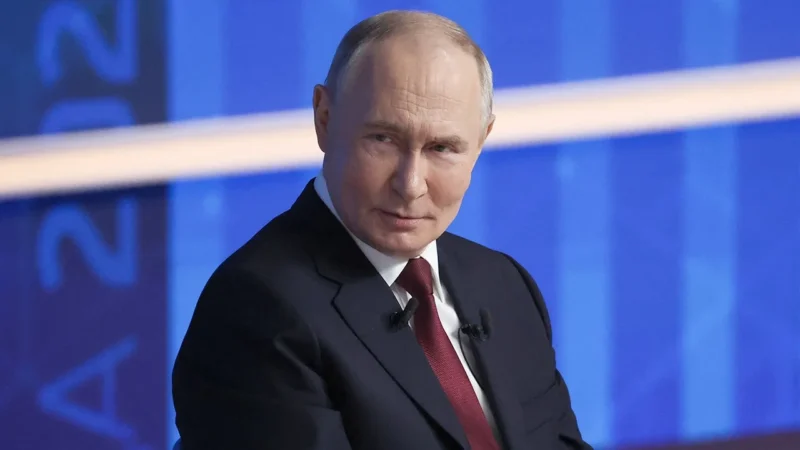
A broken train line in Poland. Fires in Estonia. Balloons from Belarus. None of it is random — and all of it is costing Europe more than Moscow ever pays.
Europe is confronting a form of warfare that leaves no craters, no front lines and few public acknowledgments — yet steadily drains its security capacity. Western intelligence officials say Russia is deliberately overwhelming European states through a sustained campaign of sabotage designed to be cheap for Moscow and exhausting for everyone else.
The evidence is mounting. In eastern Poland, a passenger train carrying nearly 500 people was forced to stop after an overhead line collapsed, smashing windows and damaging tracks. Elsewhere on the same route, explosives detonated beneath a freight train. No one was killed, but Warsaw reacted as if the warning was unmistakable: 10,000 troops were deployed to protect critical infrastructure. Polish authorities blamed Russia’s intelligence services.
That incident is one of at least 145 cases logged in an Associated Press database that Western officials link to Russia, its proxies or its ally Belarus since the invasion of Ukraine in 2022. The acts range from arson and explosives plots to cyberattacks, vandalism and warehouse fires. Most cause limited physical damage. That is precisely the point.
European intelligence officials say the real cost lies in the response. Every incident triggers multinational investigations, intelligence sharing and surveillance operations. One senior intelligence chief told AP that Russian interference now consumes as much agency time as counterterrorism. From Moscow’s perspective, tying up Europe’s security machinery is already a strategic win.
The scale is accelerating. AP data shows arson and explosives plots jumping from one documented case in 2023 to 26 in 2024, with several more already recorded in 2025. Poland and Estonia — both bordering Russia and among Ukraine’s strongest backers — are the most frequently targeted, followed by Germany, France, the U.K. and Latvia.
Officials believe Moscow briefly slowed the campaign late last year, likely to avoid antagonizing the incoming Trump administration in Washington. That pause is over. “They are back to business,” one European official said.
Russia’s method is calculated. Rather than risking trained intelligence officers, Moscow outsources operations to criminals, smugglers and foreign nationals with little to lose. Recruits are often found in prisons or through organized crime networks. One suspect linked to sabotage of Polish railways had worked for Russia’s GRU while moving across borders unnoticed, exploiting gaps in intelligence sharing.
Even failed plots serve a purpose. In Lithuania, a cache of drone parts and explosives hidden in a cemetery was uncovered before an attack could occur — but only after months of surveillance and coordination. In Latvia and Estonia, foreign operatives with no local ties have forced authorities into cross-border manhunts stretching from the Baltics to Italy.
The strategy is brutally efficient. Europe spends millions to stop attacks that cost Moscow almost nothing to organize.
Yet the pressure has produced one unintended effect: deeper cooperation. Baltic prosecutors have formed joint investigation teams. British police are training officers to recognize state-backed sabotage. Intelligence sharing is improving, even as Russia tests new methods — from arson to weather balloons drifting from Belarus that repeatedly shut down airports.
For now, the damage remains limited. But officials warn the campaign is evolving. What carries cigarettes today, they note, could carry something far more dangerous tomorrow.
This is not chaos. It is a system — and Europe is learning, belatedly, that the quiet wars can be the most corrosive of all.
Russia-Ukraine War
Zelensky Tests Washington’s Red Lines on Ukraine War

Zelensky Seeks U.S. Backing to Freeze Ukraine Front Line as Berlin Talks Begin.
Berlin — Ukrainian President Volodymyr Zelensky entered high-stakes talks in Berlin on Sunday with a clear objective: securing U.S. support for freezing the war’s front line along its current positions, effectively locking in a ceasefire without conceding additional territory to Russia.
Speaking before his arrival, Zelensky framed the proposal as the most realistic and “fairest possible option” under current battlefield conditions. “To stay where we are,” he said, “is a ceasefire.”
He acknowledged Moscow’s resistance to such an arrangement but made clear that Washington’s stance will be decisive. “I would like the Americans to support us on this issue,” he told reporters.
The Berlin meetings bring together Zelensky, U.S. President Donald Trump’s envoy Steve Witkoff, and senior European leaders at a moment of acute diplomatic tension.
Trump has intensified pressure on Kyiv to reach an agreement since unveiling a peace framework last month that critics say mirrors core Russian demands, including territorial concessions by Ukraine.
That proposal triggered urgent coordination between Kyiv and its European allies, leading Ukraine to submit revised amendments to Washington.
Zelensky confirmed he has not yet received a formal U.S. response but said signals from Washington suggest dialogue remains open. “The summit in Berlin is important,” he said. “We are meeting with both the Americans and the Europeans. These talks are happening today and tomorrow.”
At the heart of Kyiv’s position is a strategic recalibration rather than a retreat. Freezing the front line would halt Russia’s incremental advances, preserve Ukrainian-controlled territory, and create space for longer-term negotiations—without formally recognizing Moscow’s claims. Zelensky underscored that any plan must begin with a basic principle: “Russia started the war.”
The diplomatic push comes as fighting continues unabated on the ground. Ukrainian officials reported a fresh wave of Russian attacks overnight, including 138 drones and a ballistic missile.
A drone strike hit a hospital in Kherson, wounding two people, while at least 11 others were injured in the Zaporizhzhia region.
For Washington, the Berlin talks test the balance Trump is trying to strike between ending the war quickly and avoiding the perception of rewarding aggression.
For Europe, they underscore growing anxiety that U.S.-led diplomacy could harden the conflict’s territorial realities rather than reverse them.
For Kyiv, freezing the front line is not presented as peace—but as damage control. Zelensky’s message in Berlin is blunt: Ukraine is prepared to talk, but not to surrender the outcome of the war at the negotiating table after resisting it on the battlefield.
Analysis
Trump-Europe Rift Strengthens Putin’s Position as Ukraine War Enters Critical Phase

The Widening Rift Between Trump and Europe Is a Strategic Gift to Putin.
The latest rupture in trans-Atlantic relations is unfolding at a moment of acute geopolitical vulnerability—and Moscow is wasting no time exploiting it.
As U.S. President Donald Trump escalates public criticism of European leaders and questions the viability of continued support for Ukraine, the Kremlin sees a strategic opening it has sought for years: deepening mistrust between Washington and Europe, weakening NATO cohesion, and eroding the West’s unified posture against Russian aggression.
Trump’s remarks this week, dismissing Europe as “weak” and “decaying” because of its immigration policies, came just days after his administration released a national security strategy portraying European governments as obstacles to peace in Ukraine.
According to the document, Europe’s “unrealistic expectations” and alleged “subversion of democratic processes” have hindered Washington’s efforts to negotiate an end to the war.
For European leaders, the message was unmistakable. German Chancellor Friedrich Merz pushed back sharply, warning that elements of the U.S. strategy were “unacceptable” and stressing that Europe “does not need help from the United States to save democracy.” The diplomatic strain is widening—precisely the dynamic Moscow has sought to amplify since the first day of its invasion.
The Kremlin’s reaction was immediate. Spokesman Dmitry Peskov praised the new U.S. strategy as “consistent with our vision,” while Kirill Dmitriev—one of Moscow’s key intermediaries in the backchannel dialogue with Trump’s envoys—celebrated the administration’s scolding of Europe.
Russian officials have long understood that political division within the West is a force multiplier for their operations in Ukraine, and Trump’s framing delivers precisely that.
Meanwhile, Trump’s assertion that Ukraine is “losing” and that President Volodymyr Zelensky must “start accepting things” reinforces a narrative Russia has been pushing aggressively across European information ecosystems.
It mirrors the Kremlin’s psychological operations: project inevitability, erode Western resolve, and force Kyiv into concessions it cannot survive.
Moscow’s information war is tailored to exploit wavering public opinion in Europe, where the economic costs of supporting Ukraine remain a contentious domestic issue.
Sergey Karaganov, a hardline Russian political theorist, spelled out the strategic intent on state television: “We are at war with Europe, not with a pitiful, misled Ukraine… This war will not end until we smash Europe morally and politically.”
Even Russian President Vladimir Putin, while meeting Trump’s emissaries in Moscow, issued a blunt signal to European capitals: Russia is “ready right now” for conflict if Europe provokes one.
The message was aimed squarely at European publics already questioning the durability of U.S. support.
For Putin, the trans-Atlantic rift is more than a diplomatic spat—it is a geopolitical windfall.
If Europe doubts America’s commitment, if NATO’s center of gravity shifts, if Ukraine’s coalition fractures, then Moscow achieves what it cannot win on the battlefield: strategic depth, political time, and a divided West.
Russia-Ukraine War
Kadyrov Threatens Zelenskyy After Drone Strike Near His Grozny Residence
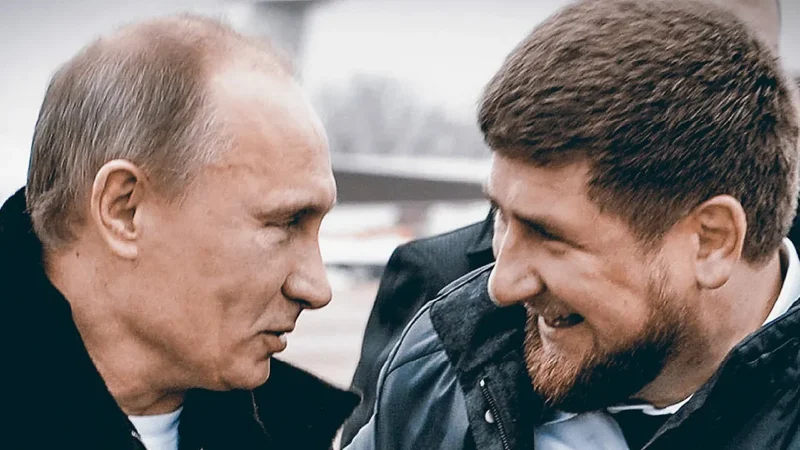
Chechen leader Ramzan Kadyrov has issued new threats against Ukraine in the aftermath of a drone strike near his residence in Grozny—warnings that echo an alleged 2022 plot to assassinate President Volodymyr Zelenskyy, according to a former Ukrainian government official.
The strike, reported by Reuters, hit the Grozny-City complex on Nov. 5, damaging a 28-story high-rise located roughly 830 meters from Kadyrov’s home.
Although Kadyrov confirmed the attack in a Telegram post and said no casualties were reported, he denounced the strike as senseless and vowed retaliation.
“Starting tomorrow and in the course of the week, the Ukrainian fascists will be feeling a stern response,” he warned, insisting that unlike Ukraine, “we will not be making a cowardly strike on peaceful targets.”
A former Ukrainian official, speaking to Fox News Digital on condition of anonymity, said Kadyrov’s rhetoric signals a revival of threats reminiscent of the early days of Russia’s full-scale invasion, when Chechen operatives were allegedly tasked with infiltrating Kyiv to kill Zelenskyy and senior government figures.
“This new threat would just be another assassination threat for Zelenskyy,” the former official said. “The Chechens are really serious about revenge. But in Kyiv they are not panicking about this like they were in 2022. Zelenskyy is now better protected, feels more powerful, and is less fragile.”
According to the former official, Kyiv’s leadership was deeply alarmed in February 2022 when intelligence indicated that Chechen units were advancing toward the capital with orders to target top political and security officials.
Zelenskyy and his chief of staff, Andriy Yermak, were reportedly concerned that Chechen fighters might penetrate the presidential bunker through one of Kyiv’s deep underground metro stations—a potential vulnerability that security services rushed to reinforce.
“They tried to reach Kyiv via the river or through other routes, but they were killed before they got close,” the former official said.
Ukrainian forces have previously struck sites inside Chechnya, including police and training facilities.
The latest strike, which hit a building housing the Chechen Security Council and regional government offices, highlights Ukraine’s expanding capacity to reach targets deep inside Russian territory.
Kadyrov—one of Vladimir Putin’s most aggressive loyalists—is signaling a harsher posture as the war increasingly spills into Russia’s internal regions. Yet Kyiv appears unfazed.
“These days, Zelenskyy isn’t afraid of Kadyrov’s actions against him or the Ukrainian people,” the former official said. “Zelenskyy is feeling very powerful right now.”
Comment
Macron in China: Can Beijing Help Broker a Ukraine Ceasefire?

French President Emmanuel Macron arrived in Beijing this week with a dual mission: press China’s Xi Jinping to help secure a ceasefire in Ukraine and confront a widening trade imbalance that has become a political and economic liability for Paris and Brussels.
The visit, Macron’s fourth to China since taking office, comes as France prepares to assume the G7 presidency next year and as global pressure mounts to break the stalemate in Europe’s deadliest conflict since World War II.
Xi greeted Macron and his wife, Brigitte, with full ceremonial fanfare in the Great Hall of the People, underscoring China’s desire to project stability and diplomatic maturity.
Rows of schoolchildren waving French and Chinese flags, military honor guards, and a red-carpet welcome set the tone for a meeting framed as a partnership rather than a confrontation.
Macron reciprocated with a warm public display, blowing kisses to the crowd before stepping into a more sober conversation behind closed doors.
Once inside, the French leader delivered a clear message: the war in Ukraine remains the defining test of the international order and China’s global ambitions.
He urged Xi to use his influence with Moscow to push for a ceasefire and support a “fair, lasting and binding agreement” that respects territorial integrity and the rule of law. Europe, Macron stressed, cannot absorb another year of conflict without profound security and economic consequences.
For Xi, peace messaging is part of Beijing’s broader strategic narrative—one that positions China as a global stabilizer while avoiding direct criticism of Russia, its most important geopolitical partner against Western influence.
He told Macron that China supports all efforts toward dialogue, but offered no indication Beijing intends to pressure the Kremlin publicly.
The meeting unfolded against a backdrop of competing diplomatic initiatives. Macron is leading an effort to counter a U.S.-backed plan that critics say grants Russia too much leverage, while Ukraine’s President Volodymyr Zelensky has warned European leaders not to drift toward political fatigue.
Zelensky, fresh from talks in Paris, reminded allies that Ukraine needs unity more than ever as Washington pushes its own proposals.
If Ukraine dominated the geopolitical agenda, trade dominated the economic one. France’s deficit with China reached €46 billion last year, and the EU’s broader imbalance—$357 billion—has become politically explosive.
Macron urged Xi to work with the G7 on new rules for a fairer, more balanced global trading system, warning that Europe cannot maintain its political stability or industrial resilience if dependency on Chinese exports continues to grow.
His advisers were blunt: China must consume more and export less; Europe must save less and produce more.
Macron reiterated long-standing calls for European “strategic autonomy,” particularly in the tech sector, where he fears the continent is becoming a “vassal” to U.S. and Chinese companies.
Xi, for his part, signaled interest in easing tensions by announcing a new cooperation deal on giant panda protection—an unmistakable gesture of goodwill toward French public sentiment.
From here, Macron heads to Chengdu, where he will meet Premier Li Qiang and seek to reinforce China’s commitments on trade, investment, and cultural cooperation.
But the larger question remains unanswered: can Europe persuade China to shift from symbolic neutrality to meaningful influence over Russia’s war in Ukraine? Macron’s visit may clarify China’s intentions, but it has not yet revealed China’s willingness.
Analysis
Why Putin Is Losing the Ukraine War Despite Claims of Victory

Nearly four years after Vladimir Putin launched his full-scale invasion of Ukraine, the Kremlin continues to insist that Russia is on the path to victory.
The reality — buried beneath layers of internal deception, failing force structures, and catastrophic miscalculations — tells a very different story.
Russia is losing a war that Putin still imagines he is winning, and the gap between battlefield truth and Kremlin illusion is widening by the day.
A Military Bleeding Beyond Recovery
By October 2025, British intelligence estimated that Russian military casualties — killed and wounded — had surpassed 1.1 million. Kyiv’s own numbers are even higher. Russia has also lost over 11,000 tanks, 23,000 armored vehicles, and 33,000 artillery systems, far exceeding its entire pre-war inventory.
Moscow’s attempt to regenerate combat power now depends on untrained recruits, prison battalions, and coercive mobilization.
Yet Putin continues to celebrate “victories” for marginal advances measured in meters, not miles. Russia’s 2025 casualty rate is the highest of the war.
Why does the Kremlin believe failure is success? Because Russia’s command-and-control system is designed to lie upward. Officers conceal losses to avoid arrest.
Corruption hollows out units. Ammunition, fuel, and salaries are stolen. Putin’s tightly centralized decision-making — built on intimidation rather than information — ensures that the military commander-in-chief is the last person to know the truth.
The Invasion That Was Built to Fail
The roots of Russia’s defeat go back to February 2022. The invasion violated every principle of modern warfare: no force concentration, no intelligence coordination, no logistical preparation, and no fallback plan.
Russia needed a 3:1 force advantage to overwhelm Ukraine. Instead it attacked with a force smaller than Ukraine’s active-duty military and divided it across six axes of advance.
The chaotic assault from Belarus toward Kyiv — Russia’s best chance for a quick victory — collapsed in a matter of weeks under Ukrainian resistance, poor logistics, and failed assumptions.
Russia’s elite airborne troops at Hostomel Airport were surrounded, pinned down, and ultimately forced into retreat.
By April 2022, the Kremlin suffered one of the most humiliating reversals in its modern military history: a full withdrawal from Kyiv Oblast.
Ukraine’s Slow Turn into a War Machine
While Russia bleeds, Ukraine has quietly transformed into a serious defense-production state. Ukrainian drone manufacturers — now numbering hundreds — have outpaced Russian innovation, forcing Moscow to adapt with crude, high-casualty infantry tactics.
Ukraine now produces more artillery shells than all of NATO combined. Domestic armored vehicle output has surged, while the locally produced Bohdana howitzer outperforms many Western systems in cost and production time.
Drone warfare has changed the character of the conflict, making Russian assaults — often launched with barely trained infantry in civilian vehicles — shockingly costly.
A Strategic Disaster with Global Consequences
Even if Putin refuses to admit it, the war has already weakened Russia in ways that cannot be reversed:
-
Ukrainian nationalism is stronger than ever.
-
NATO is larger, richer, and more energized — with Sweden and Finland joining.
-
Russia has lost Europe’s gas market.
-
More than 500,000 young Russians have fled the country.
-
Europe’s combined GDP is 10 times larger than Russia’s — an industrial imbalance Moscow cannot escape.
Putin’s war machine is burning through men and material faster than Russia can replace them, while Ukraine’s Western-backed resilience only grows.
The Kremlin still clings to the illusion of victory. But the trajectory is unmistakable: this is a war Russia cannot win, and Putin cannot survive politically in the long run.
Analysis
Secret U.S.–Russia Talks Shake Ukraine’s Allies

U.S.–Russia Backchannel Diplomacy Raises Fears of Pressure on Kyiv.
As Washington prepares for a new round of direct talks with Moscow, European leaders are bracing for a scenario they have long feared: a peace process that places the burden of concession squarely on Ukraine.
The imminent meeting between Vladimir Putin and Steve Witkoff, Donald Trump’s hand-picked envoy, has triggered a wave of alarm across Europe, where officials worry that Kyiv may be pushed toward territorial and political compromises it has repeatedly rejected.
Kaja Kallas, the EU’s foreign policy chief, captured the anxiety with unusual bluntness. The risk, she warned, is that “all the pressure will be put on the victim,” while the aggressor escapes accountability.
Kallas and other European leaders argue that any deal that rewards Russia’s invasion—by legitimizing territorial gains or limiting Ukraine’s ability to defend itself—would undermine the principles of sovereignty on which Europe’s postwar order rests.
The concerns are not theoretical. A leaked early version of the U.S. proposal, drafted by Witkoff based on a Russian outline, included sweeping concessions: ceding eastern territories Russia does not yet control, restricting Ukraine’s military capacity, and shelving its NATO ambitions.
Although U.S. officials say the plan has since been revised, Ukraine’s allies see the trajectory clearly—and they fear Kyiv will be cornered.
Zelenskyy, who has spent days rallying European support, emphasized that “Russia must not perceive anything as a reward for this war.” His government insists no Ukrainian territory will be traded for a ceasefire.
But Kyiv is negotiating from a position complicated by both battlefield pressures and political turmoil at home, including the sudden resignation of his chief of staff, Andriy Yermak, amid a widening corruption investigation.
European capitals, already uneasy with Trump’s willingness to bypass them, are pressing to ensure they are present at any negotiating table.
France’s Emmanuel Macron and Germany’s Friedrich Merz each warned that peace cannot be dictated “over Ukraine’s head,” while Poland and the Baltic states argue that allowing Russia to redefine borders by force would embolden other authoritarian regimes.
Trump’s envoys—Witkoff and Jared Kushner—have become central figures in this delicate moment. Their private diplomacy, held in venues from Florida golf resorts to Moscow conference rooms, has raised eyebrows in Europe, where officials remain wary of Trump’s transactional approach to global conflict.
For many, the fact that Trump’s team is negotiating without strong European participation is itself a red flag.
Meanwhile, Russia appears emboldened. Its forces have made their largest territorial gains in a year, seizing more than 700 square kilometers in November alone, according to U.S.-based analysts.
Putin has reiterated maximalist demands: full Ukrainian withdrawal from the Donbas and recognition of Russian control—terms even Kyiv’s most cautious allies consider unacceptable.
Yet the diplomatic clock is ticking. Marco Rubio, the U.S. Secretary of State, acknowledged the complexity but expressed optimism after weekend talks with Ukrainian officials.
The next phase—Witkoff’s arrival in Moscow—will test whether “delicate” diplomacy becomes coercive pressure.
The deeper fear in Europe is that Ukraine may be pushed toward a ceasefire that ends the fighting but codifies Russia’s gains, creating a frozen conflict that rewards aggression and leaves Kyiv strategically weakened.
For leaders like Kallas, the precedent would be catastrophic—not only for Ukraine but for European security as a whole.
This, she warned, is a “pivotal week” for the future of the war. It may also be a turning point for the Western alliance.
Russia-Ukraine War
Russian Court Hands Down Life Sentences to Eight Defendants

A military court in southern Russia has sentenced eight people to life in prison for their alleged roles in the 2022 explosion that damaged the strategically vital bridge connecting mainland Russia to occupied Crimea.
The verdict, delivered Thursday in Rostov-on-Don after a closed trial, comes more than two years after the dramatic blast that Moscow called a terrorist attack and Kyiv celebrated as a blow to Russia’s military infrastructure.
The October 2022 explosion ripped through two sections of the 12-mile Kerch Strait Bridge after a truck laden with explosives detonated, killing the truck driver and four others in a car nearby.
The attack forced months of repairs and prompted Russia to unleash a broad campaign of missile strikes on Ukraine’s power grid during the winter. The Ukrainian Security Service, the SBU, later acknowledged orchestrating the operation, though Kyiv maintains the bridge is a legitimate military target.
Russian authorities accused the defendants—identified as Artyom and Georgy Azatyan, Oleg Antipov, Alexander Bylin, Vladimir Zloba, Dmitry Tyazhelykh, Roman Solomko and Artur Terchanyan—of assisting Ukraine in the attack.
They were convicted of carrying out a terrorist act and trafficking weapons; prosecutors also accused two of the men of smuggling explosives. All eight have denied the charges, insisting they were unaware that the vehicle contained explosives and saying they were swept up as scapegoats after the blast.
Several defendants said they voluntarily approached Russian security officials to cooperate after learning of the explosion. Antipov, a logistics company owner whose firm handled shipment of the truck, said he contacted the FSB immediately and was initially released—only to be arrested days later.
In a video published by the independent outlet Mediazona, Antipov addressed the court from behind a glass enclosure after sentencing, saying the case against them ignored the evidence.
“We are innocent,” he told the court. “We all passed the polygraphs. We all cooperated fully. Not a single witness testified against us. All 116 volumes of this case say we are innocent. Show the people the truth.”
The SBU’s director, Lt. Gen. Vasyl Maliuk, had previously said he and two trusted operatives prepared the attack and used unwitting intermediaries to move the cargo. Russia has charged Maliuk in absentia, accusing him of directing a terrorist operation on Russian territory.
The Kerch Bridge holds outsized symbolic and military value for Moscow. Built after Russia seized Crimea in 2014, it is the longest bridge in Europe and a critical supply artery for Russian forces operating in southern Ukraine.
Its destruction—or even temporary disruption—poses both logistical complications for Russian troops and political embarrassment for the Kremlin.
Ukraine struck the bridge a second time in July 2023 using sea drones, killing two people and again interrupting traffic.
With Russian forces now relying heavily on the route for troop rotations, fuel, and ammunition, Moscow has tightened security around the structure and increasingly framed attacks on it as assaults on Russia itself.
The life-sentence rulings are likely to face sharp criticism from human rights groups, which have already denounced Russia’s use of closed trials, sweeping terrorism statutes, and mass arrests tied to the war.
But with the bridge remaining a central target and symbol in the conflict, Thursday’s verdict signals the Kremlin’s intent to cast the attack not as an act of war but as a crime deserving the harshest possible penalty.
-

 Analysis10 months ago
Analysis10 months agoSaudi Arabia’s Billion-Dollar Bid for Eritrea’s Assab Port
-

 Opinion17 years ago
Opinion17 years agoSomaliland Needs a Paradigm Change: Now or Never!
-
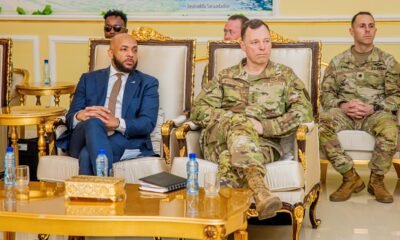
 Interagency Assessment5 days ago
Interagency Assessment5 days agoTOP SECRET SHIFT: U.S. MILITARY ORDERED INTO SOMALILAND BY LAW
-

 ASSESSMENTS9 months ago
ASSESSMENTS9 months agoOperation Geel Exposes the Truth: International Community’s Reluctance to Embrace Somaliland as a Strategic Ally
-
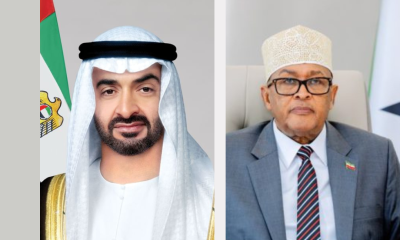
 Somaliland11 months ago
Somaliland11 months agoSomaliland and UAE Elevate Ties to Comprehensive Strategic Partnership
-

 EDITORIAL1 year ago
EDITORIAL1 year agoDr. Edna Adan Champions the Evolving Partnership Between Somaliland and Ethiopia
-
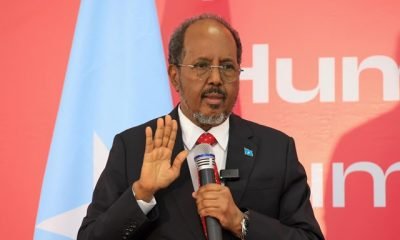
 ASSESSMENTS6 months ago
ASSESSMENTS6 months agoA Critique of the Hassan Sheikh Mohamud Administration and the Halane Enigma
-

 Africa2 years ago
Africa2 years agoHow Somaliland Could Lead the Global Camel Milk Industry


